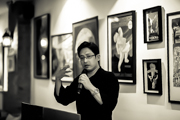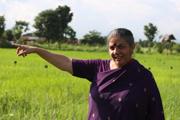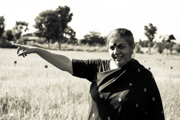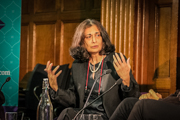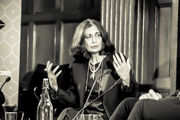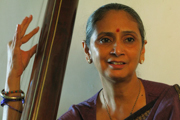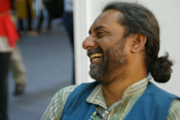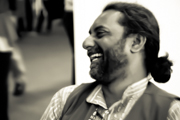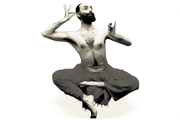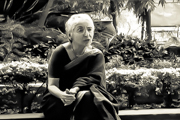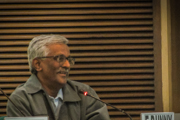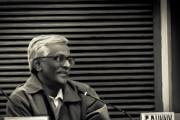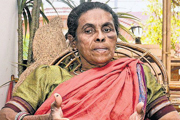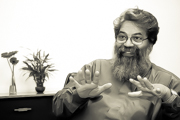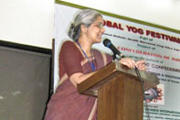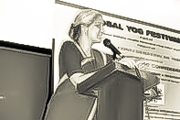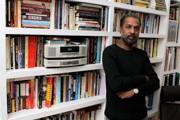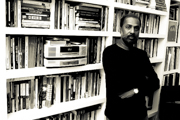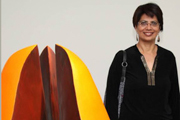Click below to read on the fourteen lectures that will make our second season of programmes:
Puppetry as a Paradigm
|
Food as Continuity |
Biography as Continuity |
||||
| Eddin Khoo | Vandana Shiva | Ritu Menon | ||||
|
Tue. 5 August – 7:00pm |
Wed. 13 August – 7:00pm |
Wed. 20 August – 6:30pm |
Song as Continuity |
Urban Space as Continuity |
Physical Traditions
|
||||
| Vidya Rao | Tapan Chakravarty | Navtej Johar | ||||
|
Thu. 4 September – 7:00pm |
Mon. 15 September – 7:00pm |
Thu. 18 September – 6:30pm |
Ritual as Continuity |
Cotton Cloth as Continuity |
The Comic as Continuity |
||||
| Pepita Seth | Uzramma | EP Unny | ||||
|
Sat. 4 October – 7:00pm |
Tue. 21 October – 7:00pm |
Tue. 11 November – 6:30pm |
Society as Continuity |
Bronze as Continuity |
Health Culture as Continuity |
||||
| Daya Bai | KS Radhakrishnan | Ritu Priya Mehrotra | ||||
|
Wed. 12 November – 7:00pm |
Thu. 4 December – 7:00pm |
Thu. 11 December – 6:30pm |
Language as Continuity |
Ceramic Culture
|
|||
| R Cheran | Kristine Michael | |||
|
_ |
Tue. 6 January – 7:00 pm |
Puppetry as a Paradigm of ContinuityEddin Khoo |
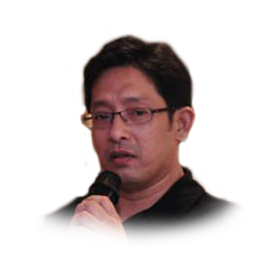 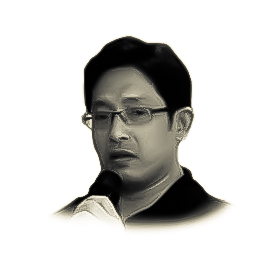 |
|||
Tue. 5 August – 7:00pm | Gulmohar Hall – India Habitat Centre, New DelhiShadow puppetry is possibly the most distinctive performance tradition associated with Southeast Asia. Encapsulating within its narrative the diverse historical and religious influences that have shaped the cultural plinth of the region, the life of shadow puppetry has also undergone countless incarnations and exists today in ritual, folk, classical and popular forms. Puppetry as a Paradigm of Continuity traces the historical roots, practice and performance of puppetry within the Southeast Asian, and more particularly the Malaysian context. It explores the evolution of such principal epics as the Mahabharata and Ramayana within the Southeast Asian landscape, the role and purpose of ritual within the shadow puppet tradition as well as the vital and innate possibilities for reinvention that have ensured its continued practice, even as it encounters challenges to its viability by agencies of the modern state.Eddin Khoo is a poet, writer, translator, journalist and teacher. The Founder of the cultural organisation PUSAKA ~ Centre for Culture, Tradition, Ideas, he is the co-author of a book on traditional woodcarving entitled The Spirit of Wood. He is the author of several forthcoming books, including a collection of poetry All the World Figure, a scholarly study, Storm Clouds: Islam, Politics and Performance in a Malay State, a travel narrative, The Verandah of Mecca and a book of essays entitled The Muslim Predicament. His latest translation effort into the Malay language is Leaves of Grass by Walt Whitman. His translations into English of the Indonesian poet Goenawan Mohamad and the Malaysian poet Latiff Mohidin will be published in 2015-2016. Eddin Khoo resides in Kuala Lumpur. Raj Liberhan, the Director of India Habitat Centre (IHC), Delhi, will chair the lecture and moderate the discussion. He has held a significant range of responsibilities at the senior level in government, public sector and NGO environments, for more than four decades. |
||||
Food as ContinuityVandana Shiva |
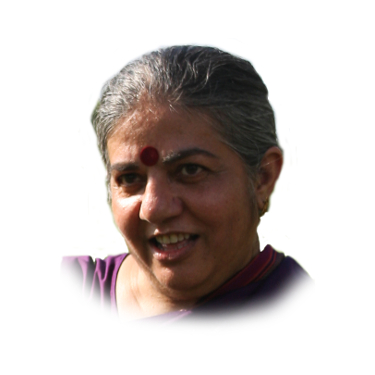 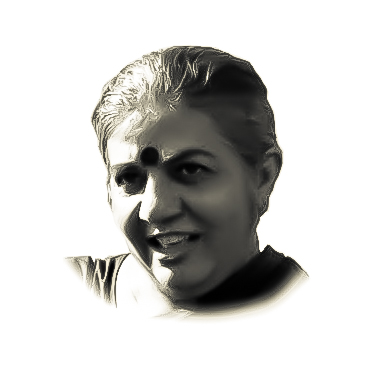 |
|||
Wed. 13 August – 7:00pm | Gulmohar Hall – India Habitat Centre, New DelhiThere are 3 imperatives for the continuity of food. First, food is the embodiment of nature’s processes, and ecological laws have continuity. Second, food is nourishment and health – the laws by which the metabolism of our bodies is maintained have continuity. Third, food is culture – culture is change with continuity. Today, discontinuity and rupture related to the food system is leading to major disruptions and dislocations in ecological systems, health systems, and cultural systems. This lecture will address these disruptions, but also food movements like Navdanya, which are shaping a food system that protects the Earth, our Farmers, our Health, and our Diverse Food Cultures.Vandana Shiva is a trained physicist and an inter-disciplinary expert in science, technology and environmental policy. After founding the Research Foundation for Science, Technology and Ecology in Dehradun in 1982, she created Navdanya in 1991. This national movement, aiming at protecting the diversity and integrity of living resources and promoting organic farming and fair trade, served beyond half a million men and women farmers in two decades. She is an acclaimed and awarded teacher and author, a recognised activist and an acclaimed communicator. Dr. Shiva had held board positions in various government and state-based committees. Beyond India, she has campaigned internationally on issues surrounding biotechnology and genetic engineering but also on the general upliftment of the woman’s condition across the globe. She serves on Prince Charles’s expert group on Sustainable Agriculture, she is a member of President Zapatero’s Scientific Committee in Spain, and she is now working with the Bhutan government. Somnath Bandyopadhyay, Senior Advisor for Research at the Centre for Civil Society, will chair the lecture and moderate the discussion. His work has focused on environmental policy as well as economic and financial development planning, both in research and in execution, in the governmental and non-governmental sectors. |
||||
Biography as ContinuityRitu Menon |
 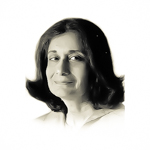 |
|||
Wed. 20 August – 6:30pm | Seminar 2 & 3 – India International Centre, New DelhiWhen an individual’s life illustrates a profound engagement with a nation’s history, it invites the attention of minds across time. When such a movement is closely watched and written about, there emerges a rare view of continuity and discontinuity as parallel streams, both in the life of the subject and that of the nation. The lecture, Biography: Discontinuous Continuous, presents Nayantara Sahgal’s biography as a text that simultaneously hints at an incipient biography of post-Independence India. Through an exploration of Sahgal’s life, her politics and her fiction and non-fiction, it concludes that the ‘discontinuous continuous’ indeed characterises the lives of individuals as much as it does that of countries and cultures.Ritu Menon is a major Indian publisher and writer. In 1984, she founded with Urvashi Butalia the first exclusively feminist publishing house in the country, Kali for Women. Ritu Menon co-authored Borders & Boundaries: Women in India’s Partition (Kali for Women, 1998) and edited No Woman’s Land: Women from Pakistan, India & Bangladesh Write about the Partition of India (Women Unlimited, 2004). As part of the Core Group of Women’s WORLD, India, Ritu has co-edited Just Between Us: Women Speak About their Writing (Women Unlimited, 2004) and Storylines: Conversations with Women Writers (Women Unlimited, 2003). Her book From Mathura to Manorama: Resisting Violence Against Women in India (Women Unlimited, 2007) was co-authored with Kalpana Kannabiran. She has also authored numerous newspaper articles and op-eds. Ritu Menon focuses on the questions of feminism and violence, religion and social order. In 2011, the Government of India conferred the Padma Shri on her. Her work Out of Line: A Literary and Political Biography of Nayantara Sahgal has recently been released. G. Arunima, Director of the Centre for Women’s Studies at Jawaharlal Nehru University, will chair the lecture and moderate the discussion. Her work has focused on family and kinship, aesthetics, modernity, visual culture, religion and faith practices as well as gender, sexuality and visuality in contemporary photography. |
||||
Song as ContinuityVidya Rao |
 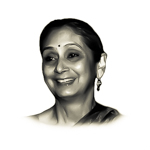 |
|||
Thu. 4 September – 7:00pm | Gulmohar Hall – India Habitat Centre, New DelhiCertainly, the traditions of song and music in India are an example of a centuries long and continuous tradition. Yet, I need to ask: what exactly do we mean by ‘continuity’? If by this, we mean an unchanged tradition, handed down exactly as it was, then this description would not fit the real world of music. For, within the continuities of musical traditions passed down from guru to shishya, of songs and bandishes sung over generations, we still see discontinuities, changes. These changes, in fact, make the tradition richer, more interesting, and enable it to live, to be meaningful over time and space. But we also see that despite many small and big changes, there is much that remains the same. The talk will explore the idea that music and song bring us to the understanding that continuity of, and changes in traditions are not inimical to each other. It is the very fact of change, discontinuities even, so much a part of these living traditions, that are, paradoxically its very sense of continuity. Vidya Rao is a performer of thumri-dadra and ghazal. For many years the disciple of the legendary singer, the late Vidushi Naina Devi, she has continued her study of this form under the renowned Vidushi Shanti Hiranand and has also received taleem from Vidushi Girija Devi. Her initial training in khayal was under the late Prof. B.N. Datta and thereafter under Pandit Mani Prasad. She has performed at national and international forums, has lectured and conducted workshops and lecture-demonstrations, and has composed and sung for theatre, film and dance. She has also researched and written extensively on music and the performing arts, focusing on gender and musical form. Her most recent work, Heart to Heart: Remembering Nainaji, is a memoir of life with her guru Naina Devi. Vidya Rao has been Visiting Professor at the School of Arts and Aesthetics, Jawaharlal Nehru University, New Delhi, and Visiting Fellow at the Centre for Advanced Study, Jadavpur University, Kolkata. Anuradha Kapur, previous Director of the National School of Drama, will chair the lecture and moderate the discussion. Her directorial work has widened the scopes of categories and genres, in collaboration with visual and video artists as well as filmmakers. In 1989, she was among the founder members of Vivadi, a working group of painters, musicians, writers and theatre practitioners. |
||||
Urban Space as ContinuityTapan Chakravarty |
 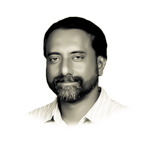 |
|||
Mon. 15 September – 7:00pm | Casuarina Hall – India Habitat Centre, New DelhiThe space, where the urban community meets to interact, celebrate, contemplate, perform, protest or simply hang out is generally the public precinct, which forms the better part of Urban Spaces. Often, the street and the public space willy-nilly overlap and juxtapose in a variety of ways, uses and relationships. Street life, street food, street bazaars, street art, street performances, street sports have traditionally evolved from this simple amalgamation that no city can do without. Do such spaces appear non-productive to the real estate developer or the infrastructure planner and thus are deemed to disappear? Do such spaces misappropriate relevance and invite extinction? Do such spaces silently morph or metamorphose to trend with the times & the eventual way-of-life? The built and the un-built are perpetually in conflict yet eternally in tandem; in a continuity that is more variable than constant. The lecture presentation aspires to discuss contradictions in continuity.Tapan Chakravarty is currently Professor at Pearl Academy, heading the Department of Interior Architecture & Product Design. Teaching, consulting and practicing in Delhi/NCR for over twenty-five years, his interests lie in History of Habitation, Vernacular Dwellings & Organic Settlements. Tapan completed his Bachelor of Architecture & Masters in Urban Design from New Delhi, and PGC in Higher Education from UK. Ranjit Mitra, Head of Department of Urban Design in the School of Planning and Architecture, New Delhi, will chair the session and moderate the discussion. He is an architect with more than two decades of experience in teaching, in India and abroad. |
||||
Physical Traditions as ContinuityNavtej Johar |
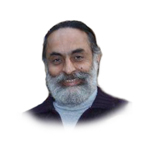  |
|||
Thu. 18 September – 6:30pm | Seminar 2 & 3 – India International Centre, New DelhiAn Unquiet History of Stillness – This presentation shall attempt to trace the spiritual practices that involve the body, i.e. yoga, dhyana, plus all the arts, to the materialist philosophy of Samkhya, insightful on two accounts – its careful steering clear of any doctrine, and its sophisticated process of distilling matter into spirit. Spirituality, as real and profound an experience it may be, has never been an innocent affair. Thus, apart from specifically the yogic practice, the talk will also dwell upon the imperceptible manipulation and perhaps deliberate obfuscation of the radical idea – the spiritual possibilities of the purely, physical body – through the interlacing of prevalent mainstream doctrines into its central argument. The paper will also talk of the paradigm shift in the history of spirituality where dukkha is replaced by sukha as a means of attaining higher spiritual aims.Navtej Johar is a Bharatanatyam dancer, choreographer and a yoga exponent. Founder of Studio Abhyas, New Delhi, a nonprofit organisation dedicated to yoga, dance-theater, urban activism and the care of stray animals, he trained in Bharatanatyam at Kalakshetra, studied yoga at the Krishnamacharya Yoga Mandiram, Chennai, and critical-studies at the Department of Performance Studies, NYU. Johar’s work draws on plural vocabularies of Bharatanatyam, yoga and physical theater, and seeks to examine the physical, aesthetic and spiritual traditions of India within the discourse of its multiple nationalisms. A recipient of the Charles Wallace and the Times of India Fellowships, he is currently a fellow at the “Interweaving Performance Cultures,” International Research Center, at Freie University, Berlin. Uma Chakravarti, independent historian, will chair the session and moderate the discussion. She is a Professor of History, having taught at Miranda House College for Women, Delhi University for 42 years. She writes on gender and caste in India, and her publications include Rewriting History. The Life and Times of Pandita Ramabai (New Delhi, Kali for Women, 1998). |
||||
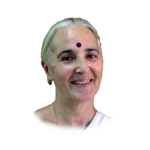 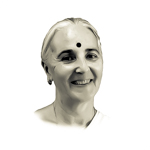 |
Ritual as ContinuityPepita Seth |
|||
Sat. 4 October – 7:00pm | Gulmohar Hall – India Habitat Centre, New DelhiAnnapoorneswari’s World – After arriving in central Malabar, the goddess Annapoorneswari offered protection to everyone and sought links with surrounding shrines. She thereby bound the many different communities together, with even the local Theyyam deities becoming associated with her, reflecting and enhancing her importance. Today, this importance remains in the everyday life of the locality.Pepita Seth trained as a film editor, worked on many British and American feature films. She first visited India in 1970, to retrace her soldier great-grandfather’s diary account of his role in the 1857 march from Calcutta to Lucknow. All her subsequent visits were to Kerala, where she photographed Hindu rituals throughout the state. She lived in Kerala from 1979 to 1986 and, although based in Delhi from 1986-1999, made extended visits to Kerala to begin photographing Theyyam. In late 1999, she returned to Kerala. After working for 7 years on her book Heaven on Earth: The Universe of Kerala’s Guruvayur Temple she restarted her still ‘in progress’ work on the Theyyam rituals of Malabar. In 2012 she was awarded the Padma Shree. Rizio Yohannan Raj, Executive Director of LILA, will chair the lecture and moderate the discussion. She is a bi-lingual writer and educationist. Her works include three collections of poetry in English: Eunuch (2010), Naked by the Sabarmati and Other Guna Poems (2012) and Exchanges with the Thinker (2013). She is also the author of two novels in Malayalam (Avinasom and Yatrikom), the first of which is translated into English as A Tale of Things Timeless (2012). Her academic works include a pioneering volume on Comparative Literature, Quest of a Discipline: New Academic Directions for Comparative Literature (2012). |
||||
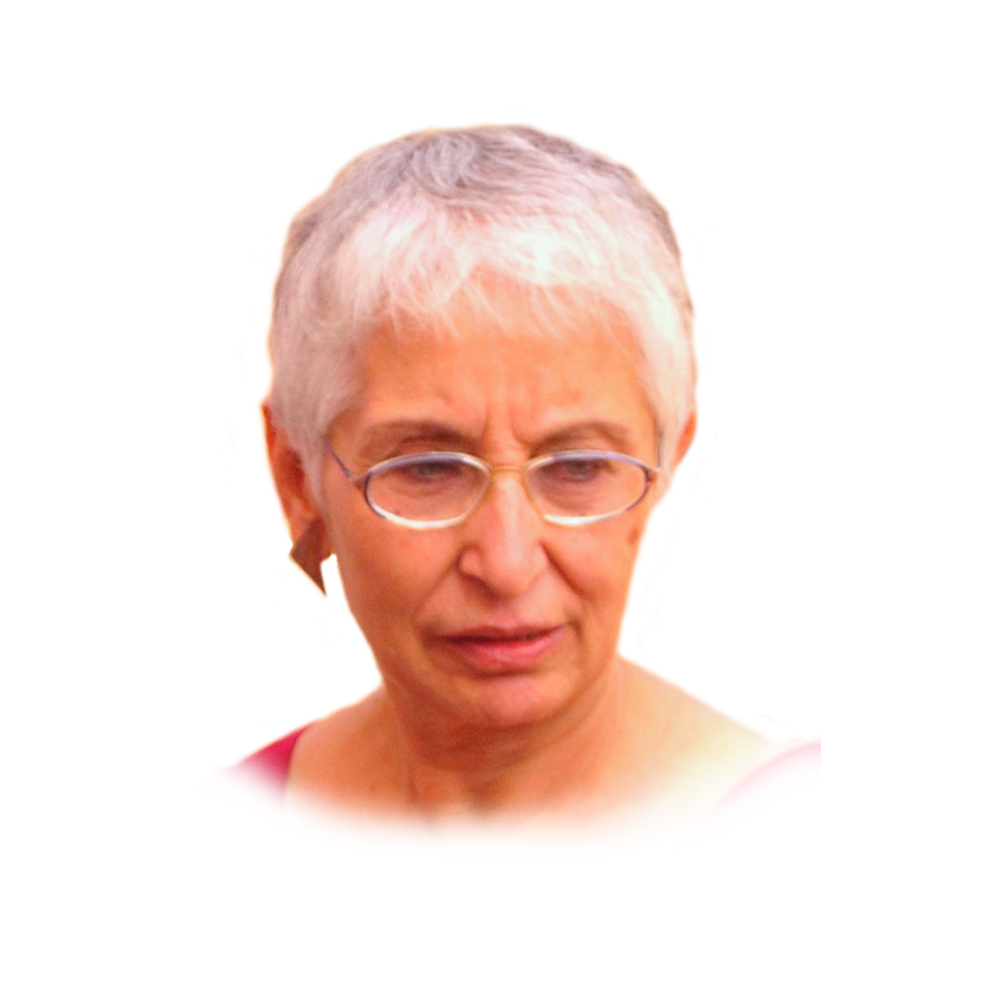 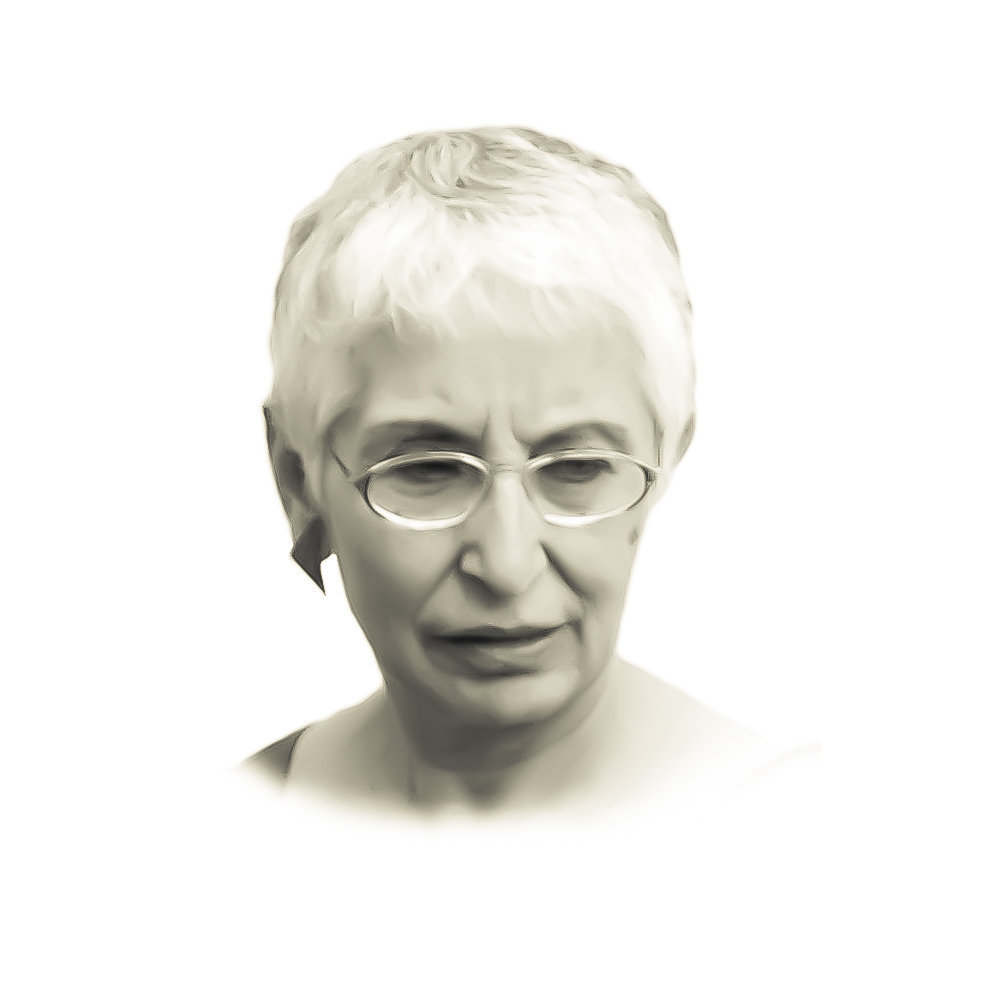 |
Cotton Cloth as ContinuityUzramma |
|||
Tue. 21 October – 7:00pm | Gulmohar Hall – India Habitat Centre, New DelhiThe Power of the Handloom – India possesses a treasure house of skills and natural advantages in making cotton cloth on the handloom. This gives the country the huge advantage of a world-beating low-energy textile production process in the coming energy-stressed future. It can clothe its own people and increase its share of world textile trade – which from 50-60% in the mid-19th century has declined to less than 5% today. Cotton cultivation and yarn making should be integrated in the textile value chain to give a good living to farmers and weavers. The making of Malkha fabric is an initiative in this direction, based on years of practical and historical research.Uzramma, born a Hyderabadi, initiated the Dastkar Andhra Trust in 1995 to provide research and marketing services to the cotton handloom industry of Andhra Pradesh, and natural dyeing training to artisan groups. Retiring from Dastkar Andhra in 2005, Uzramma founded the Decentralized Cotton Yarn Trust and the Malkha Marketing Trust, of which she is currently the Director. Recognising the critical issue of yarn to the handloom industry, these organisations took up the challenge to make cotton yarn on a small scale in rural areas, bypassing some energy-intensive and damaging processes, and to market Malkha fabric woven on handlooms from this yarn. Dunu Roy, Director of the Hazards Centre, will chair the lecture and moderate the discussion. For the last three decades, he has been a major activist, agent and initiator around concerns of urbanism, development, technology, engineering and environment. |
||||
 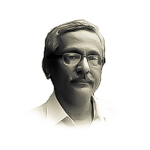 |
The Comic as ContinuityEP Unny |
|||
Tue. 11 November – 6:30pm | Seminar 2 & 3 – India International Centre, New DelhiContinuity is inherent to the cartoon art in its very dissemination. It functions from the temporal journalistic platform. The comic strip originated as Sunday funnies over a century back, in American newspapers, and the political cartoon migrated early to European newspapers. Both have since been serially read and must develop stakes in public memory. The news cartoon, bound to the unfolding of public life, invariably invokes the immediate past and suggests the near future. The comic strip which mostly sticks to the same ageless characters ought to create a still life but in practice builds up a continuum.E.P. Unny is a celebrated Indian political cartoonist. After an education in sciences, he published his first cartoon in Shankar’s Weekly, in 1973. Four years later, he becomes professional, first with the Hindu, before working with The Economic Times, and finally The Indian Express Group, where he is currently Chief Political Cartoonist. He is the author of several graphic novels in Malayalam, of the travel book Spices and Souls – A doodler’s journey through Kerala (DC Books, 2001) and of Santa and The Scribes – The Making Of Fort Kochi (Niyogi Books, 2014). Ravikant, bilingual historian, writer, and translator, will chair the lecture and moderate the discussion. Ravikant has been an integral part of the Sarai programme of CSDS (Centre for the Study of Developing Societies, Delhi). He has been coordinating projects on language, free software, and media, involving editorial, administrative, and intellectual engagements with the programme’s tech and Indic language networks. His current social history project, ‘Words in Motion Pictures’, navigates inter-media sites such as print, broadcasting, and web in an effort to offer creative connections between these media forms and their diverse publics. |
||||
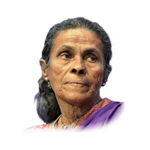 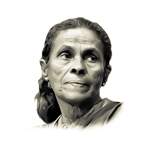 |
Society as ContinuityDaya Bai |
|||
Wed. 12 November – 7:00pm | Gulmohar Hall – India Habitat Centre, New DelhiTribal systems of knowledge work in close affinity between nature and humanity. As time passes, tribal cultures, in order to survive the changes and to sustain their indigenous essence, have to contemporise their knowledge, the failure of which might result in their extinction as a whole. But a blind acceptance of the changes from without also harms this rich culture. The Gonds in Madhaya Pradesh have already lost their culture and language, while there are other tribes that have assimilated modern streams of knowledge for the support of their ethnicity. The biggest damage has come over in agriculture, where the indigenous crops have given way to cash crops. The systems of governance in the tribal regions have tended to be more manipulative. In earlier times, among the Gonds, as with many other tribes, the governance of the different streams of knowledge was enabled in such a manner that for each stream there was a specialist or a leader and this position was transferred through lineage. Such a system ensures continuity, unlike the present parliamentary democracy. Of late, these structures and systems have crumbled down and are becoming extinct. In spite of attempts to reclaim the tribal structures and to contemporise those, the immense damage done to nature cannot be made unseen and a turning back to tribal ways is imminent. But the greatest task is to stand against the strong counter force and to survive and maintain their ethnicity.Daya Bai is a social activist working for the upliftment of tribals in Central India. She went to Hazaribag in Bihar to become a nun but left this project half way, to contribute to the protection of tribal groups in Bihar, Haryana, Madhya Pradesh, Maharashtra and West Bengal. She worked with communities at turning points of their histories, such as after the war in Bangladesh, or after gas disaster in Bhopal. She discovered the Gonds in MP and decided to stay on with them. Currently, she is teaching organic farming to the villagers of Barul. Her main goal is trying to maintain the tribal systems of knowledge by amalgamating them with contemporary ones. Her background in law aids the tribal in their disputes and argument without judicial involvement. Shashwati Goswami, Associate Professor at the Indian Institute of Mass Communication, New Delhi, will chair the lecture and moderate the discussion. Her areas of interest include Media Policy, Public Health Communication, Environment and Conflict Communication, Radio Broadcasting and Community Radio. She has worked extensively in the areas of Development-Induced Displacement and Urban Poverty. She is a recipient of Panos South Asia fellowship for conflict reporting and Rockefeller archive centre grant-in-aid for archival research in family planning communication. A native of Assam, she has worked with tribal communities in the North East. |
||||
Bronze as ContinuityKS Radhakrishnan |
 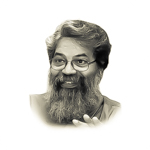 |
|||
Thu. 4 December – 7:00pm | Gulmohar Hall – India Habitat Centre, New DelhiAeschylus called ‘bronze’ the mirror of the ’form’ – a material capable of reflecting and revealing a form, and its meaning. But how does an artist portray the dynamism of the human spirit and the speed of time with this heavy metal? How does a sculptor represent the human aspiration for lightness with it? Bronze as Continuity takes us on a journey through the speaker’s works, to demonstrate, how, paradoxically, the very gravity of the material that keeps a bronze sculpture rooted to the ground, indeed makes it possible, too, to throw a high figure of joy into the air. This also explains how he has chosen to stick to this medium, forming a strong bond between his artist’s self and his material. Now, is it just a medium for the artist’s self expression? How does he use this material to connect with the world about him? How does he communicate with ‘time’ through this ancient material? How does he construct and move history in his own time and space using this medium?KS Radhakrishnan is recognised as one of the most significant figures in contemporary Indian art. He is a sculptor and bronze has remained his prominent medium for a long time. A native of Kottayam in Kerala, he pursued his formal training in art from the prestigious Kala Bhavan of Vishwabharati University, where he was mentored and trained by two important figures of Indian modernism, Ramkinkar Baij and Sarbari Roy Chowdhury. He was awarded with the National Scholarship offered by the Government of India in 1978, at 22 years old. Radhakrishnan completed his MFA in 1981 and soon was awarded with a research grant by the Lalit Kala, Delhi to work in Garhi Village, New Delhi. This also gave him an opportunity to move to the capital and explore the diverse artistic practices of the metropolis. Since then, he has held more than fifteen solo shows including shows at the Centre des Bonds de Marne, LePerreux-Brysur-Marne (France), the Lalit Kala Akademi (New Delhi) and at the Birla Academy of Art and Culture (Kolkata), amongst others. Among the numerous group shows in which his works have been exhibited are the National Exhibition at New Delhi (1980); Triennalle India (1990); Salon International de la Sculpture Contemporaine at Nouveau Forum des Halles, Paris (1995); Hippodrome de Longchamp, Paris (1996); Espace Michel Simon-Noisy le grand, France (1996), Beijing Biennale (2012). From the 1980’s onwards Radhakrishnan has installed open-air sculptures across the country and abroad including at the TMI foundation, Cotignac, France. Rizio Yohannan Raj, Executive Director of LILA, will chair the lecture and moderate the discussion. She is a bi-lingual writer and educationist. Her works include three collections of poetry in English: Eunuch (2010), Naked by the Sabarmati and Other Guna Poems (2012) and Exchanges with the Thinker (2013). She is also the author of two novels in Malayalam (Avinasom and Yatrikom), the first of which is translated into English as A Tale of Things Timeless (2012). Her academic works include a pioneering volume on Comparative Literature, Quest of a Discipline: New Academic Directions for Comparative Literature (2012). |
||||
Health Culture as ContinuityRitu Priya Mehrotra |
 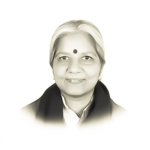 |
|||
Thu. 11 December – 6:30pm | Seminar 2 & 3 – India International Centre, New DelhiContemporary literature views health culture in three distinct ways. The earliest and most pervasive is the colonial anthropologists’ view, as the beliefs and ways of dealing with health problems of the primitive, under-developed communities that are resistant to change and whose ‘culture’ is therefore static. Secondly, the developmentalist’s view, as the behaviours and perceptions of lay people of any community or society, under-developed or developed, that change with access to technological development. And more comprehensively, holistic public health views health culture of any society as a complex of the forms of both expert and lay knowledge(s), institutions that diffuse the practice of that knowledge (such as hospitals/health centres/community health care providers/international health programmes), and ways of dealing with health dimensions beyond direct health care. This third comprehensive understanding of ‘health culture’ challenges us to explore the continuity and change manifest in the multiple knowledge systems and practices present in ‘pluralistic health care’ existing in contemporary India, and indeed in the world. This lecture attempts to trace the continuities and convergences in the multiple knowledge traditions existing simultaneously in the present, from the local folk traditions to the officially recognised textual traditional systems, to conventional ‘modern medicine’ and public health, and on to their advancing frontiers. Interspersed with disruptions and divergences, a non-linear progression of knowledge and practice is evident in the cultural continuities. It is up to us as a society to make sense of this complex plural health culture and celebrate the continuities and disruptions, the convergences and divergences, which contribute to health, happiness and wellbeing.Ritu Priya Mehrotra, a medical graduate with a doctorate in Community Health, is currently Professor at the Centre of Social Medicine and Community Health, JNU, New Delhi. Her work links epidemiology, popular culture, political economy and health systems analysis for developing an understanding of ‘health culture’ as well as drawing upon it for a contextually suited health systems development policy. It has been specifically focused on the politics of knowledge between healing systems and between experts and laypeople; health perceptions of dalits and other marginalised groups; urban health; nutrition and communicable diseases. She has been Advisor (Public Health Planning) with the National Health Systems Resource Centre under the National Rural Health Mission, and also been actively involved with the people’s health movement in the country for over three decades. Savyasaachi, Head of the Department of Sociology at Jamia Millia Islamia University, Delhi, will chair the lecture and moderate the discussion. His work has focused on the ecological and environmental dimensions of sociology and political economy. |
||||
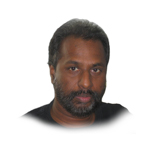 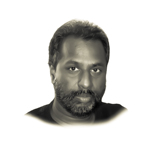 |
Language as ContinuityR Cheran |
|||
R Cheran’s PRISM Lecture has been cancelled due to flight cancellation,
|
||||
Ceramic Culture as ContinuityKristine Michael |
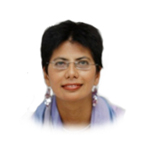  |
|||
Tue. 6 January – 7:00pm | Gulmohar Hall – India Habitat Centre, New DelhiThe magical convergence of symbol and practice in the ceramic tradition of India reveals a fascinating interplay of history and myth. The artist’s own practice forms itself as a means of pushing boundaries of material and subject matter. The humblest of vessels holds an echo of antiquity and collective memory as well as a vibrant contemporary vision in the ceramic art of the 21st century.Kristine Michael trained in ceramic design with Dashrath Patel at The National Institute of Design, Ahmedabad and subsequently with Alan Caiger Smith at Aldermaston Pottery, UK. Her formative creative years in Auroville and at The Golden Bridge Pottery in Pondicherry with Ray Meeker and Deborah Smith built a strong base in wood firing and stoneware glazes. She has received numerous awards, and her work is a part of important collections in England, Korea, the USA and Austria. She has written articles on ceramics – both historical and contemporary – as well as on ceramic artists, in publications like Treasures of the Albert Hall Museum Jaipur, Devi Prasad, PR Daroz catalogue for Art Alive, Handicrafts of Gujarat, and the yet to be published Jaipur Blue Pottery, among others. She has participated in many international exhibitions and lectures on Indian ceramics. She is based in New Delhi and is currently Curriculum Leader of Visual and Performing Arts at The British School New Delhi. Naman Ahuja, art critic, curator and Professor of Indian Art History at Jawaharlal Nehru University, New Delhi, will chair the lecture and moderate the discussion. He specialises in Indian iconography, sculpture and temple architecture. Naman Ahuja has taught widely in Europe, the USA and India, and he has curated various acclaimed exhibitions, the most recent of which, The Body in Indian Art was shown at the Palais des Beaux Arts in Brussels and the National Museum, New Delhi. |
||||



